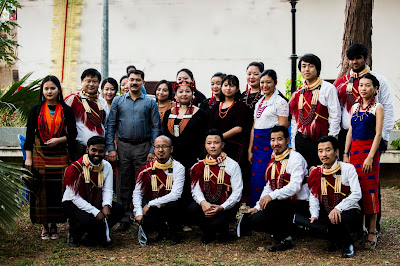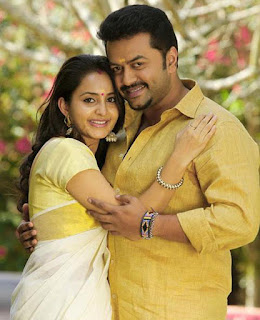COLUMN: LOCATION DIARY
Make-up
artist Renjith Ambady taks about his experiences in the films, ‘Thanmatra’,
‘Palunku’, ‘Paleri Manikyam’, ‘How Old Are you?’ and ‘Take-Off’
Photos: Renjith Ambady; Mammootty in ‘Paleri Manikyam’
By
Shevlin Sebastian
Before
the shoot of ‘Thanmatra’, make-up artist Renjith Ambady went with director
Blessy for a script-reading at veteran actor Nedumudi Venu’s home in
Thiruvananthapuram. As Blessy was talking about Venu's role, as Mohanlal’s
70-year-old father, Renjith did a trial make-up on Venu.
“Venu
Sir did not pay any attention to what I was doing because he was focused on
listening to the script,” says Renjith. Thereafter, the visitors were invited
to have tea and snacks in the dining room. “On the wall, I saw several black
and white photos of Venu Sir’s family,” says Renjith.
Suddenly,
two family members of Venu asked Renjith whether he had ever seen Venu’s uncle.
The make-up man shook his head and said, “This is the first time I am coming to
Venu Sir’s house.”
Then
they pointed at a photo of an uncle. He looked exactly like the way Venu did
after the make-up session. “It was amazing, to me, to see the likeness,” says
Renjith.
Renjith
had a similar amazing experience on the sets at Kattapana for Blessy’s
‘Palunku’ (2006). He did the make-up of Jagathy who plays a lottery seller.
When Renjith was growing up in Paravur, he had seen a lottery-seller who had
sparse hair, but kept combing it all the time. So, he made a similar wig for
Jagathy.
After
the shoot, Jagathy asked the stills photographer to get him a large print.
Renjith then asked Jagathy whether he took stills of the films he had acted in.
“I was curious to know since he has acted in more than a thousand films,” says
Renjith. Instead, Jagathy said, “This is the first time I am asking for a
still. I like this wig a lot.” For Renjith it was a supreme moment. “It was
almost like I had won a national award,” he says.
Another
actor who was impressed with Renjith’s work was superstar Mammootty, when they
worked together for the film, ‘Paleri Manikyam’ (2009).
Mammootty
played three roles, of which one was of a feudal landlord called Murikkum
Kunnathu Ahmed Haji. For this role, Mammootty needed to wear a wig of white
hair. But he did not like the idea of applying glue and attaching the wig to
the forehead. So Renjith had to think of another way.
For
days he could not find a solution, till, one day, inspiration struck.
“The
character wears a Muslim cap,” says Renjith. “So, around the cap, I stitched
the white wig. During the shoot, all Mammootty Sir had to do was to wear the
cap. So there was no need to paste the wig. Mammootty said, ‘This is a very
good idea. Where did you get it? On Google?’”
But
there were tough moments too. Just before the shoot commenced for Manju Warrier's
comeback film, ‘How Old Are you?’ (2014), directec by Roshan Andrews, Renjith
was travelling at midnight towards Kuttikanam to reach the location of ‘7th
Day’. Unfortunately, he hit another car and fractured his right hand. So he
immediately called Roshan and said that he would not be able to work in the
film, as it would take one month for his hand to heal.
“But
Roshan Sir said that the plaster could be removed after two weeks and I could
start working,” says Renjith. But after a fortnight, when the plaster was
removed, the bone had not healed. Again the plaster was put back on. After
another week, the plaster was taken off and again the doctor discovered that
the hand had not healed. In the end, Renjith’s assistants did all the work.
Then
last year, because of a persistent pain in the ligament of his leg, which was
caused by an accident a long time ago, the doctors decided to join the bones
with a screw. “As a result, I could not work for three months,” says Renjith.
Just
after he recovered, he got a call from the makers of ‘Take Off’. But when he
arrived at the set, producer Anto Joseph smiled and told Renjith, “In the early
discussions, when your name came up, everybody felt that you would not be able
to commit to a long shoot and that you would go away now and then to work on
other films. But when we heard that you had been home for three months, we felt
that since your leg was still healing, there was very little chance you would
have got another movie quickly. So, we felt that you will be with us throughout.”
The
shoot lasted for a year and it turned out to be a fruitful one for Renjith. He
has just won the Kerala State Film Award for Best Make-up Artist for
‘Take-Off’.
(The New Indian Express, Kochi, Thiruvananthapuram and Kozhikode)

















